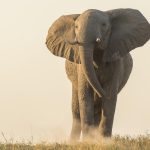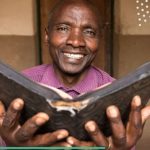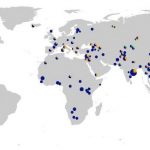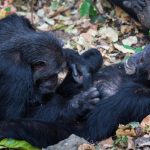![sub-buzz-31592-1470168838-7[1]](https://nextcompareinsurance.com/wp-content/uploads/2016/09/sub-buzz-31592-1470168838-71.jpg)
In 2009, I set out to hike the Appalachian Trail from Georgia to Maine. Over the five months it took me to cover those 2,000 miles of mountainous terrain, I was transformed into a mythic beast. Fat, and then muscle, began to evaporate from my frame. My legs were the only exception; instead they grew freakish, veiny, and equine. Atop my head sprouted the hair of a gorgon. From my chin, the beard of a goat. A mustache grew over my top lip and began to curl inward toward my teeth, like a tarantula’s furry chelicerae. By the trail’s end, my T-shirt had begun to dissolve from the months of friction and corrosive sweat. If I reached back, I could feel my shoulder blades pushing through the threadbare fabric like budding wings.
Most of us who embark on a long hike do so seeking change, buoyed by the almost-magical hope that we can walk ourselves into a new body or a new state of mind. But when it actually takes place, the experience of transformation can be unnerving. As soon as I returned home from the trail, to share the good news with my friends, I logged onto Facebook and posted a photo of myself sitting atop the iconic sign on Maine’s Mount Katahdin, a bottle of cheap champagne in hand. I thought I looked normal, but to the world I looked like a newly rescued shipwreck victim. A good friend commented: “This photo scares the fuck out of me. I just had a several minute debate about whether or not it was actually you.”
![sub-buzz-29658-1469808867-13[1]](https://nextcompareinsurance.com/wp-content/uploads/2016/09/sub-buzz-29658-1469808867-131.png)
All who hike the Appalachian Trail undergo some form of transformation. After a few weeks of being on the AT, I could distinguish a “thru-hiker” (someone traveling the trail’s full length) from a “day hiker” with a single glance. Many thru-hikers seemed to relish the transformation, and even accentuate it: The guys tended to grow out their facial hair, while the women allowed their body hair to bloom. One clever hiker took a selfie once a day, and then time-lapsed them into a single, mesmerizing 15-second clip; in it, a lichenous gray beard sprouts on his face, like something in an Attenborough documentary.
There was a certain romance to all this — on some level we fancied ourselves wild animals, despite our absurdly modern clothing and gear — but it was practical, too. The human body has evolved to get all hairy and greasy and gross. It remembers its origins, even if we don’t. Surprisingly quickly, your nose stops noticing what you smell like, and starts tuning in to the subtler aromas of the forest. One day while I was hiking, I remember catching a whiff of something alien floating on the breeze — a cloying chemical smell. Minutes later, a group of Girl Scouts came around the bend, and I pinpointed it: Herbal Essences shampoo.
When it actually takes place, the experience of transformation can be unnerving.
Following a long-standing tradition, each of us thru-hikers adopted new “trail names” to match our new bodies. Most people were given their names by fellow thru-hikers because of something they had said or done: My friend Snuggles, for example, had a habit of snuggling up against other hikers in the lean-tos at night to keep herself warm; I was given the name Spaceman after my shiny ultralight hiking gear. Others picked names in an attempt to shape new, aspirational identities for themselves. A tense silver-haired woman renamed herself Serenity, while a timid young man called himself Joe Kickass. Sure enough, over time, she seemed to grow incrementally calmer, and he more audacious.
I noticed the trail’s impact on my brain long before I noticed the effect it was having on the rest of my body. Studies have shown that going for a nature walk reliably increases creative thinking. And indeed, each day as my legs warmed up, I found my brain would begin fizzing with ideas for stories that I wanted to write and questions I wanted to research. There is a long tradition of writers — Wordsworth, Kierkegaard, Rimbaud, Woolf, Solnit, to name only a few — who found and find inspiration afoot. However, I quickly discovered that, because I was spending 10 hours each day walking, I was left with almost no time (or energy) to write. I took to carrying a small notebook in my hip pocket, so I could jot down ideas on the hoof.
At the end of a long day of walking, my mind’s coked-out internal monologue would finally subside, and I’d feel myself slipping into a state of zen-like clarity — serene, crystalline, thought-free. Frédéric Gros, a philosopher of walking, nicely conveys this sensation: “There is a moment when you walk several hours that you are only a body walking. Only that. You are nobody. You have no history. You have no identity. You have no past. You have no future. You are only a body walking.”
Within the first week, I was surprised to discover that my sleeping patterns had also changed drastically. Shortly after sunset, I would retire to my hammock and then read myself to sleep. Around 2 a.m., my eyes would snap open and I would not be able to fall back asleep for at least another hour or two. I have since learned that, prior to the invention of electric light, most people slept in this bisected fashion: In medieval English literature they often refer to these two phases as “first sleep” and “second sleep.” Between the two, during that interval of time once called “the watch,” people would tend to the fire, empty their bladders, have a smoke, make love, plot mischief, pray, and so on. I learned to keep a book and a headlamp within easy reach, so I could resume reading until my mind grew groggy again. It was a wonderful state of mind in which to read — pleasantly quiet, slightly unreal, golden-lit. “An intermediate space,” as Nathaniel Hawthorne once wrote, “where the business of life does not intrude; where the passing moment lingers, and becomes truly the present.”
By the end of the first month, I started to have vivid, almost pornographic dreams about food — an obsession that would only intensify as the months wore on. Studies have shown that on an average day, thru-hikers burn roughly 2,000 more calories than they eat. And thru-hikers, I can assure you, eat a lot. On an average day, I would begin by eating a Pop-Tart before I even emerged from my sleeping bag, followed, once I was upright, by something more substantive, like a Clif Bar. Then, as I walked, I would keep three or four granola bars handy, which I would nibble continuously. Around 10, I would stop for a snack (hefty handfuls of gorp say), then again for lunch around one (half a log of summer sausage, a large chunk of sharp cheddar, and bagel chips — always bagel chips, never bagels, I quickly learned, because bagel chips are still tasty when they are reduced to crumbs, as everything in a backpack inevitably is). Then there would be another snack at 4 (a second large helping of gorp), one more when I dropped my pack for the day (usually a candy bar, to reward myself and give me the energy to unpack my stuff and set up my hammock).
For dinner, I would boil up a heaping pot of noodles or rice, trying, whenever possible, to stick to brown rice or whole wheat pasta, which I’d cooked back home, dehydrated, and mailed to myself at intervals along the trail. I was fortunate to have access these healthier alternatives; most hikers, relying on what they find in nearby grocery stores, don’t have this luxury. This matters more than you might think, because one strange side effect of “hiker hunger” is that you begin to acutely feel the quality of the nutrition you are putting into your body. One day in Virginia, having hitchhiked into the town of Marion to resupply, I stopped off at an all-you-can-eat Chinese buffet. I had been looking forward to the meal for days, and, indeed, it did not disappoint. But when I returned to the trail, I could feel, on an almost-molecular level, the lack of vitamins and the superabundance of sugar and salt and oil (and whatever else) passing through my gut. Bad fuel. I felt depleted rather than energized by it. Another afternoon, farther north, I bought a culinary monstrosity called a “giant whoopie pie” — a kind of dessert-burger, in which a blob of white frosting is sandwiched between two chocolate-cake buns — which gave me a blissful sugar high, followed by a crash so precipitous it plunged me into depression for the rest of the afternoon.
Despite what felt like constant and unrestrained noshing, over the course of my hike I lost 12 pounds. That’s about the average: One study found that hikers who walked the full length of the trail tend to lose about 15. However, the range of weight loss differs wildly from one person to another: The heaviest person in the study lost just under 70 pounds, while the lightest lost only 5. For a variety of reasons, women tend to lose about half as much weight as men. Some former thru-hikers have told me they lost no weight at all; one guy said he even gained a few pounds.
A lighter body means you can walk faster, longer. The same basic logic applies to your backpack, which leads hikers to jettison unnecessary items and invest in lighter gear. As my load lightened up and my legs grew stronger, my pace gradually increased from 10 miles per day up to 15 and then 20. I continued to accelerate as I reached the relatively low-lying ridges of Maryland, Pennsylvania, New Jersey, New York, Connecticut, and Massachusetts. By the time I crossed over into Vermont, I was covering as many as 30 miles in a day.
In some sense, I have never been healthier than when I was hiking the AT. But it was a strange sort of fitness, because I was fit for only a single task: walking. One afternoon in Maine, a woman agreed to let my friend Hi-C and I stay at her lakeside hotel for a reduced rate, if we would agree to swim out into the lake and retrieve a floating trampoline that had come loose from its mooring. The task seemed easy enough — swim out, tow the trampoline over to the mooring (a distance of about 10 yards), and reconnect it — but it just about killed us. When we jumped into the lake, we both discovered that we could barely swim. Without any body fat, we had a hard time floating. Our arms felt weak. Almost an hour later, we emerged blue-lipped from the water, clutching ourselves and shivering electrically, the way 10-year-olds do after a swim class.
When I polled my hiker friends to ask about how the trail changed their bodies, nearly everyone reported some kind of injury or ailment: sore knees, rashes, abrasions, shin splints, broken bones, fractured joints. (Indeed, one study showed that more than 60% of all AT thru-hikers experience some kind of injury.) Nimblewill Nomad, a legendary old thru-hiker who has been hiking more or less continuously since 1998, has broken four ribs, his shinbone, and his ankle. He has even been struck by lightning.
A successful thru-hike demands you to get to know pain intimately, on a daily basis, and then to push through it.
Naturally, most hiking injuries center around the feet, which bear the brunt of the impact. Blisters bubble up. Toenails blacken and fall off. Joints swell. During the course of my hike, my feet grew a half shoe size. Two separate hikers have told me that they “walked the fat pads off” their feet, which is apparently very painful. In prolonged wet conditions, like the ones we experienced in 2009 — waterproof boots, as every thru-hiker learns, being amyth — the skin can also “macerate”; it grows pale and soft, then cracks or sloughs off, and can even become gangrenous. The easiest way to spot a thru-hiker, I’ve found, is to catch them after a long day of hiking, or early in the morning, when they are barefoot. It’s the oddest thing, but it’s true: without their boots, the super-hiker is reduced to a limping old crone.
Though it is rarely acknowledged as such, the experience of pain is one of the most memorable aspects of hiking the trail. Not the flaring pain of a stubbed toe, or the dizzying pain of a broken bone, but the steady, near-constant, low-level pain that I’ve been told characterizes old age. Pain is horrible, there is no question; that is why we spend our whole lives avoiding it. But the shadow of pain grows more menacing in its absence, and by shrinking away from it, we radically restrict the scope of our experience. A successful thru-hike demands you to get to know pain intimately, on a daily basis, and then to pushthrough it.
When I returned to New York City after completing the Appalachian Trail in late August, that pain lingered in my bones. The intricate machinery of my feet — the tarsals and phalanges, the cuboid and cuneiform bones, the ligaments and tendons and muscles and arteries and veins — ached for a month afterward. In the mornings, I would rise from my bed and hobble to the bathroom with cringing, nonagenarian steps. Overnight, I had gone from being a purebred walker to someone who could barely walk.
It takes your body a few days to realize that you have stopped hiking for good. The grace period seems to last about three or four days; hikers who take breaks longer than that told me that they began to feel more tired and sore, rather than more rested. It is as if, after four days without hiking, the body’s control center says, “Ahh, finally, this death march is over. Now we can begin doing all of those repairs we’ve been putting off for months.”
However, other changes to my body were perceptible immediately. Even as my friends and I came down from the summit of Katahdin, picking our way along a treacherous ridge called the Knife’s Edge, I felt different. I was no longer moving toward Katahdin, which for five months had been my north pole, my grail, my Oz — suddenly, I was moving away from it. Famished, we drove to a nearby diner and bought ourselves a lunch of chicken parm sandwiches and tallboys of beer. The food was delicious, but already I could feel my wolfish enjoyment dissipating. This food, I knew, wouldn’t be used to fuel my legs, nor would it feed my fantasies. It was just plain old food — equal parts pleasure and guilt.
Back in New York, I began attending graduate school and working part-time at a distillery. Surprisingly quickly, I fell back into the rhythms of city life; I was so busy, I did not have much time to linger over the severity of the transition. Unlike most former thru-hikers, I did not feel any pangs of deep nostalgia for life on the trail. Many report feeling an intense desire to resume hiking, which they call “trail fever.” Some become so obsessed that they return to thru-hike the trail again the following spring. A few even return year after year, the trail having become the center of gravity around which their lives revolve. I did not feel any burning desire to go back, but I would catch myself, late at night, looking over the logistics of another long trail, the Continental Divide Trail, which is said to be even harder, wilder, and lonelier than the AT.
Unless you’re dilligent about creating a new life for yourself, when you get home, youtransform back.
Over a matter of months, I gradually regressed into something resembling my old self. First, I shaved my scraggly beard, which had begun to draw nervous stares from strangers; then, a few weeks later, I cut my hair. The weight I had shed slowly filled back in, layer by later, as if I were being dipped in paraffin. The sense of calm and confidence I had felt on the trail was replaced by ambient anxiety. My thinking was staticky; my attention, hard to fix. Perhaps more than anything, I missed the intimate, working-dog connection that I’d once had with my body. I returned to spending most of my day in the realm of the mind, stopping off to visit the realm of the body only on certain occasions — while exercising, or hooking up, or during those mirror-bound bouts of self-scrutiny in the moments preceding a shower.
Inspirational backpacking memoirs often paint a vivid picture of the “transformative” effects of a long-distance hike. But here’s what those kinds of books too often leave out: Unless you’re dilligent about creating a new life for yourself, when you get home, youtransform back.
After a while, even the pain in my feet subsided, and with it, the last bodily vestige of my time on the Appalachian Trail. Well, not quite. There was one other vestige: In the bathroom of my father’s apartment was a Ziploc bag filled with human hair. When I had first shaved my beard, I had swept up the cuttings and saved them to use as a gross prank: I intended to mail the bag to a friend who had (reasonably) found the beard disgusting back when it was attached to my face. But then I forgot to send it. A year later, on a visit home, I discovered it in the cupboard above the sink. I picked it up. Five months of memories were held in that little Ziploc. It weighed nothing. Shorn from its original context, it was rendered null: a few wisps, a bygone memory, an old joke that no longer seems funny. I considered holding onto it, as a memento of my grand adventure. Instead, I walked into the kitchen and tossed it in the trash compactor, with the rest of the scraps and empty wrappers.
Robert Moor is an award-winning writer living in British Columbia. His essays and articles have appeared in Harper’s, GQ, New York Magazine, n+1, and many other publications. On Trails: An Exploration is his first book.
To learn more about On Trails,
![sub-buzz-1508-1469133189-1[1]](https://nextcompareinsurance.com/wp-content/uploads/2016/09/sub-buzz-1508-1469133189-11.jpg)











RSS